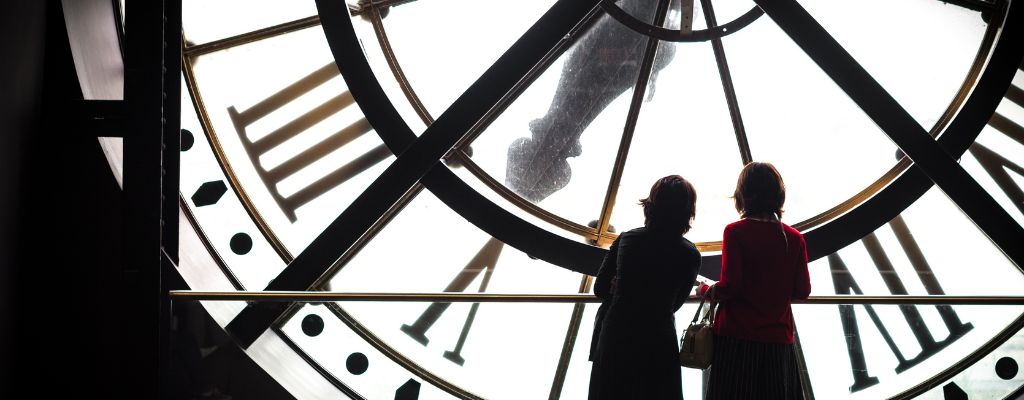In the intricate dance between time and sunlight, Daylight Saving Time (DST) emerges as a temporal phenomenon that has shaped our daily lives and routines. Twice a year, clocks spring forward or fall back, altering our relationship with daylight and casting a spotlight on the concept of time manipulation.
Daylight Saving Time is a practice where clocks are adjusted forward by one hour during the warmer months and then set back by one hour in the cooler months. This temporal adjustment aims to make better use of natural daylight and is typically observed in regions that experience seasonal changes in sunlight duration.

Daylight Saving Time works by adjusting the clock forward by one hour during the warmer months and then reverting it back by one hour during the cooler months (spring forward fall back). The primary goal is to make better use of natural daylight and to extend the period of daylight available in the evenings.
The process begins with the clock being adjusted forward by one hour at a designated time, typically during the spring months. This is often referred to as "springing forward." The exact date for this adjustment can vary by country and region.
By moving the clock forward, an hour of daylight is effectively shifted from the morning to the evening. This means that there is more daylight available in the evening, which can have various benefits, including the potential for energy savings and extended opportunities for outdoor activities.
Daylight saving time is usually observed during the warmer months when days are longer. The specific start and end dates for daylight saving time can vary by country and region. In many places, it begins in the spring, typically between March and April, and ends in the fall, usually between September and November.
When the DST period concludes, the clock is adjusted back by one hour, a process often referred to as "falling back." This typically occurs during the fall months. The reversion to standard time is intended to provide a more natural alignment between the clock and the changing patterns of daylight.
During the months which do not observe daylight saving time, the standard time is observed. The clock remains set to the standard time, and there are no further adjustments until the next transition to DST.
The primary purpose of Daylight Saving Time is to make better use of natural daylight during the longer days of the year, typically in the warmer months.
It's important to note that while these are the intended purposes of DST, its effectiveness and benefits have been subjects of ongoing debate. Critics argue that any energy savings are offset by increased energy use for heating or cooling, and the disruption to people's sleep patterns can have negative consequences on health and well-being. The debate over the purpose and efficacy of DST continues, and some regions have chosen not to observe it or have reconsidered its implementation.
The clock should be changed for Daylight Saving Time at the designated transition dates, which typically occur in the spring and fall. The specific dates for these changes can vary by country and region.

Daylight Saving Time was first introduced during World War I as a measure to conserve energy. The practice was initially implemented by Germany and Austria-Hungary in 1916 as a way to make more efficient use of daylight hours and reduce the need for artificial lighting.
The rationale behind the introduction of DST was primarily tied to energy conservation efforts during wartime. By shifting the clocks forward in the spring and back in the fall, it was believed that nations could reduce the consumption of coal, a key energy source at the time. The extended daylight in the evening was thought to decrease the reliance on artificial lighting, thus saving energy resources for the war effort. The idea gained traction and was subsequently adopted by other countries, including the United Kingdom and the United States.
After WWII, the use of DST became more standardized and widespread, with many countries adopting and adjusting the practice based on their specific needs and energy conservation goals. Over time, the observed daylight saving time reasons have evolved, with proponents citing benefits such as energy savings, increased productivity, and extended opportunities for outdoor activities. However, the effectiveness and necessity of DST continue to be debated, leading some regions to reconsider or abandon the practice.
During WWI, attitudes shifted. The government recognized the need to use coal to heat a house. Germans were the first official to use light-extending systems as fuel-saving measures during WWI. The twice yearly changing of time was introduced in 1916 British Summer time: between May, 21 and October, 1 - clocks in British cities were pushed an hour further ahead. Nevertheless, there were significant oppositions to it. A congressional committee was created in order to examine benefits from daylight savings times.
The history of Daylight Saving Time in the United States is marked by a series of changes, repeals, and reintroductions.

• Early 20th Century: The concept of DST was first proposed by entomologist George Vernon Hudson in 1895, but it wasn't until WWI that the United States officially adopted DST. On March 19, 1918, the Standard Time Act established both standard time zones and the practice of DST in the U.S. The goal was to conserve energy during wartime.
• Post-World War I Repeal: After WWI, the U.S. repealed the Daylight Saving Time law in 1919, largely due to opposition and lack of consistent support. States and localities were left to decide whether to observe DST.
• World War II Reintroduction: During WWII, President Franklin D. Roosevelt instituted "War Time," which was essentially year-round DST, from February 9, 1942, to September 30, 1945. This was done to save energy during the war.
• Uniform Time Act of 1966: The confusion arising from the inconsistent observance of DST led to the Uniform Time Act of 1966. This federal law standardized the start and end dates of DST but allowed states to opt out. The law came into effect in 1967.
• 1970s Energy Crisis: In response to the energy crisis in the early 1970s, DST was extended in the United States. From 1974 to 1975, DST began on January 6, 1974, and ended on October 27, 1975.
• Extended DST in 1986: The length of DST was extended by the Energy Policy Act of 2005, signed into law by President George W. Bush. Starting in 2007, DST began on the second Sunday in March and ended on the first Sunday in November.
• Current Standard: The Energy Policy Act's provisions remain the standard for DST in the United States. However, there have been discussions and debates about its effectiveness and whether the country should continue observing DST. Some states have considered or enacted legislation of permanent daylight saving time or to opt-out of it altogether.
It's important to note that not all states and territories in the U.S. observe DST, as individual states can choose whether or not to participate, or make daylight saving time permanent. This has led to a patchwork of observance across the country.
Several states have explored or passed legislation to eliminate Daylight Saving Time. Notable examples include Arizona, Hawaii, and territories like Puerto Rico and the U.S. Virgin Islands. Each has chosen to stay on standard time throughout the year, avoiding the clock changes hour ahead.
Several states in the United States have explored or taken steps toward eliminating Daylight Saving Time by either opting for year-round DST or staying on Standard Time throughout the year.
California: California voters passed Proposition 7 in 2018, allowing the state legislature to consider year-round daylight saving time.
Washington: The state of Washington passed a bill in 2019 expressing its intent to adopt year-round daylight saving time if federal approval is granted.
Oregon: Similar to Washington, Oregon passed legislation in 2019 expressing its intent to adopt year-round daylight saving time upon federal approval.
Florida: Florida passed the "Sunshine Protection Act" in 2018, seeking approval from Congress to move the state to year-round daylight saving time.
South Carolina: In 2020, the South Carolina House of Representatives passed a bill to adopt year-round daylight saving time.
Georgia: The Georgia Senate passed a resolution in 2019 to request Congress to allow the state to observe daylight saving time year-round.
It's important to note that even if a state passes legislation, a change to permanent daylight saving time requires approval from the U.S. Congress.
There hasn't been a definitive decision or federal legislation to eliminate Daylight Saving Time across the entire United States. While some states have explored or passed legislation to make daylight saving time permanent or to stay on standard time throughout the year, any significant change would require federal approval.
Several bills have been introduced in Congress to address the issue, proposing either the elimination of DST or making it permanent, but none have passed both chambers. The future of DST in the U.S. depends on legislative decisions, public opinion, and ongoing debates surrounding the benefits and drawbacks of the practice.
Several proposals and discussions have emerged regarding the introduction of year-round Daylight Saving Time in various regions, including the United States. These proposals typically aim to eliminate the practice of changing the clocks twice a year and maintain a consistent time throughout the entire calendar year.
Proponents argue that adopting year-round DST could lead to energy savings by reducing the need for artificial lighting in the evenings, especially during the darker months. Some proponents suggest that having extra hour in the evening could positively impact public health by encouraging outdoor activities and reducing the risks associated with Seasonal Affective Disorder (SAD).
It's important to note that while there is support for year-round DST, there are also critics who raise concerns about potential drawbacks. These may include disruptions to morning activities, impacts on sleep patterns, and varying effects on different geographical regions.
Removing the semi-annual time change associated with Daylight Saving Time could have several potential effects, both positive and negative.
• Consistency and Stability: Eliminating the time change would provide a more consistent and stable time environment. People and businesses would not need to adjust their schedules twice a year.
• Simplification: The absence of clock changes would simplify timekeeping and avoid confusion associated with adjusting to different time zones.
• Reduced Disruptions: Removing the time change could mitigate disruptions to sleep patterns, reducing potential negative impacts on health (for example, heart attacks) and well-being.
• Predictability: Businesses and individuals could better plan activities and schedules without the need to account for seasonal time adjustments.
• Energy Usage: Daylight saving time started as the goal of energy conservation and reducing energy costs. Some argue that the time change helps save energy by reducing the need for artificial light in the evenings. Eliminating it might impact energy consumption patterns.
• Economic and Social Impact: Certain industries, such as retail and outdoor recreation, might be affected by the absence of more light in the evening, potentially impacting economic activities.
• Regional Variations: Different regions experience varying amounts of daylight, and eliminating the time change may not be equally beneficial in all areas.
• Public Opinion: While there are arguments for and against the time change, public opinion varies. Some people may prefer the longer evenings associated with DST, while others may appreciate the consistency of a fixed time.
The impact of removing the time change would depend on factors such as geographic location, local economies, and individual preferences. It's essential to consider both the advantages and disadvantages when evaluating the potential effects of eliminating the semi-annual time change. The ongoing debates and legislative discussions on this matter reflect the complexities and differing opinions surrounding Daylight Saving Time.
After Daylight Saving Time starts in Summer, the period has been shortened to Daylight Time or DT for short. Once Daylight Saving Time finishes we go into the “standard time” or “ST”. Its abbreviation includes the time zone. Eastern Daylight Time is also EDT and Eastern Standard Time is ET.
Comments will be approved before showing up.
Sign up to get the latest on sales, new releases and more …